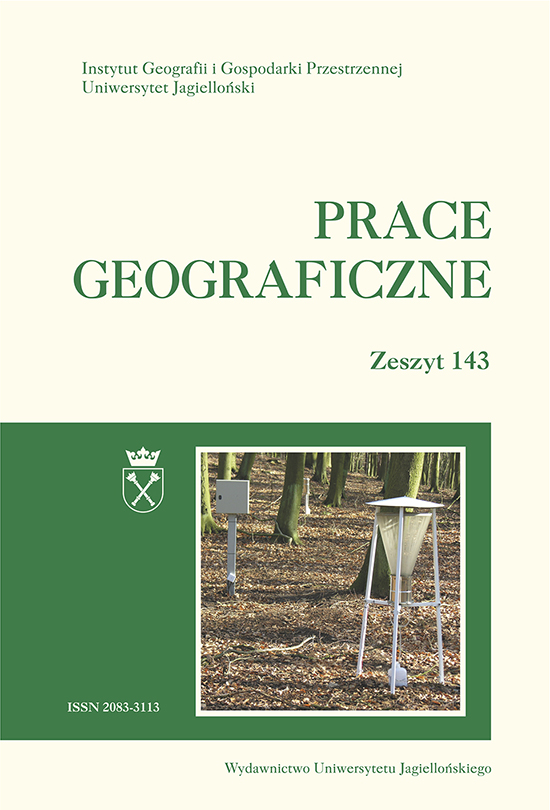Geographic individuality of basins without outlets in a post-glacial area (Parsęta catchment, West Pomeranian Province
Geographic individuality of basins without outlets in a post-glacial area (Parsęta catchment, West Pomeranian Province
Author(s): Maciej MajorSubject(s): Geography, Regional studies
Published by: Wydawnictwo Uniwersytetu Jagiellońskiego
Keywords: post-glacial area; closed depression; morphometric indicators; lithology; soils; water chemistry
Summary/Abstract: The paper seeks to present the exceptional qualities of closed basins commonly found in areas covered by the last Pleistocene glaciation. Such basins are a natural part of the landscape ; they occupy a large percentage of the area. The research was conducted in the Parsęta catchment over the course of several years. Two basic types of basins without outlets were analyzed absorptive basins : absorption basins, evapotranspiration basins. The geographic individuality of small landforms with no surface runoff was characterized on the basis of key morphometric indicators, lithology, soil distribution, and physical-chemical properties of surface and groundwaters. Closed basins are usually small concave landforms, roughly circular in shape, at the bottom of which organic sediments attain a great thickness. In the southern part of the Parsęta catchment, permeable sediments predominate, while those located in its middle part are predominantly retentive in nature. Typical features of the spatial distribution of soils in the small catchments of closed depressions are their ring-like pattern going down towards the bottom and a predominance of organic soils in the bottom. Surface and groundwaters in these catchments display a low and a medium level of mineralization, and the elements dominating in their chemical composition are those coming from the leaching of rocks, the chief source of which is chemical weathering, as well as biogenic components connected with the deposition of organic sediments in the bottoms.
Journal: Prace Geograficzne
- Issue Year: 2015
- Issue No: 143
- Page Range: 21-31
- Page Count: 14
- Language: English

